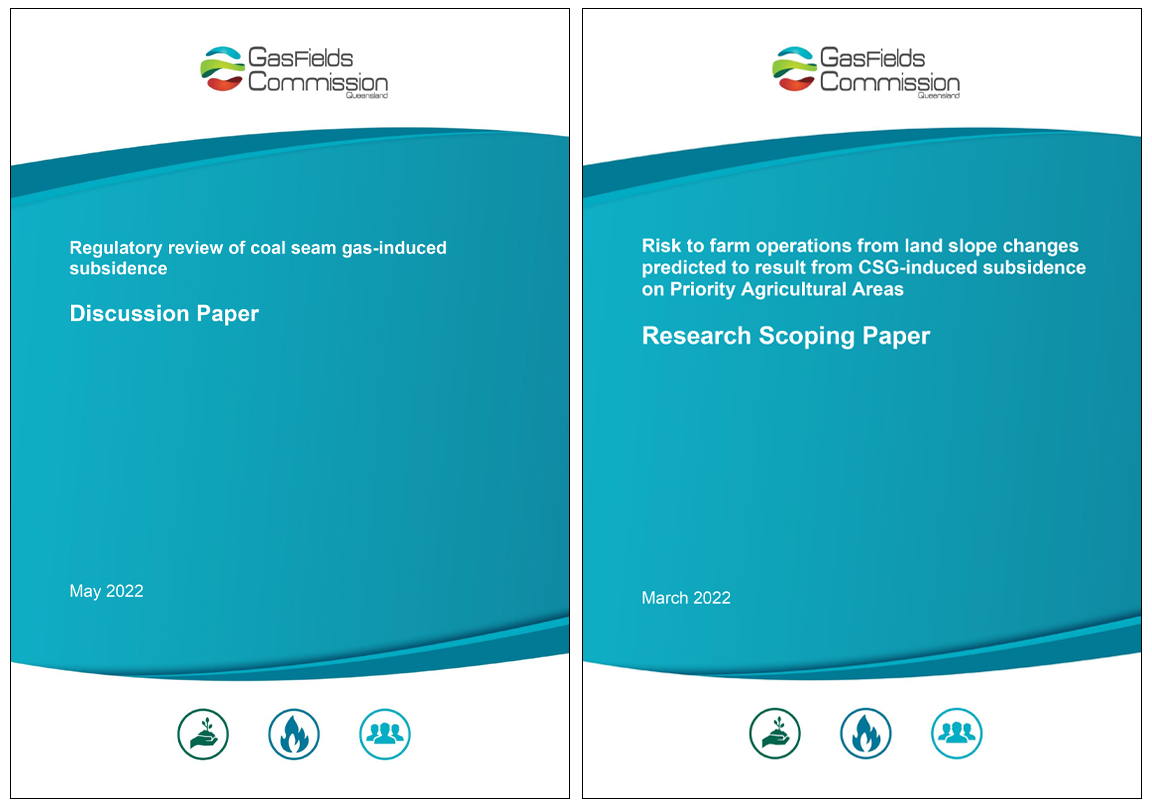Subsidence research in Queensland’s gas regions – implications for the agricultural and resource sectors
Following confirmation that subsidence is occurring as a result of coal seam gas (CSG) extraction, the GasFields Commission Queensland (the Commission) is proactively leading the conversation around the potential implications for Queensland’s priority agricultural areas.
Following initial observations by the Office for Groundwater Impact Assessment (OGIA) around CSG-induced subsidence, landholders from Queensland’s Condamine River floodplain and agricultural peak bodies raised concerns with the Commission. Key among the concerns were around the what legal protections are available to landholders should coal seam gas-induced subsidence result in economic impact on highly specialised and slope dependent farming operations.
With the move to extracting gas resources located under some of the state’s most productive cropping land, it is vital that should land impacts occur there is a good understanding of legislative protections are in place as well as the process available.
Initial modelling indicates that most of the cropping area around the Condamine River floodplain, south of Dalby, is likely to experience less than 100 mm of subsidence. However, it was also observed that some areas may experience subsidence levels of up to 175 mm.
Given the importance of slope management and overland flow for this type of farming, if CSG-induced subsidence were to become substantial there could be risk to a farm’s economic bottom line. This could include costs associated with groundworks and replacement soil to rectify land change and potential loss of crop production.
The Commission believes it is vital that appropriate and rigorous checks and balances are in place, along with a robust understanding of the potential economic consequences of CSG-induced subsidence on farming operations.
The Commission’s work in this space has led to its releasing its “Regulatory review of coal seam gas-induced subsidence” Discussion Paper for targeted feedback from relevant stakeholders including landholders, agricultural representatives, resource peak bodies and government agencies.
The discussion paper outlines the existing regulatory framework protections and how it could apply to the farming sector should CSG-induced subsidence result in economic loss. While the initial read is that there are some protections already in place for CSG-induced subsidence, there is an opportunity to provide greater clarity and enhance the existing protections for landholders.
In addition, the Commission is also leading a research project in partnership with OGIA, to develop a framework for assessing, at a farm scale, the risk to farming operations on intensively farmed land arising from predicted CSG-induced subsidence. The research is focused on gaining an understanding of the impacts of subsidence on a farm scale in terms of the change in slope and what may be required to remediate the impacts.
Ultimately, the Commission will bring together the research findings and outcomes of the regulatory review to deliver a package of recommendations to government later in the year on how to best address CSG-induced subsidence.
The Commission remains committed to publishing factual and contemporary information related to the onshore gas industry that is relevant, meaningful and valuable to our stakeholders.

Who are the GasFields Commission Queensland?
Established as an independent statutory body in 2013, the Commission’s purpose is to manage and improve the sustainable coexistence of landholders, regional communities and the onshore gas industry in Queensland. The Commission manages sustainable coexistence in petroleum and gas producing regions of Queensland, and will continue to do so as the industry expands into new and emerging basins.
Our vision is to achieve thriving communities in areas of gas development that are free from discord and supported by well-informed, respectful and balanced stakeholder relationships.
One way the Commission is endeavouring to realise this vision is by providing transparency and independent assurances that the onshore gas industry is appropriately regulated and held to account when needed. This in turn will help cultivate sustainable coexistence, whilst ensuring community and landholder confidence in the regulators and gas industry increases.
Drawing on its wealth of experience in the development of the gas industry and by collaborating with other relevant entities, the Commission provides a range of support to communities and landholders, primarily through education and engagement. These education and engagement activities occur with individual landholders via Commission facilitated webinars, information sessions, publications (The Gas Guide, Shared Landscapes Reports), face-to-face meetings and public workshops.
It should be noted that the Commission does not engage in individual negotiations between landholders and gas companies, but rather provides communities and landholders with the information and support they need to make informed decisions and achieve good outcomes.
![]()
![]()
![]()
![]()
![]()

